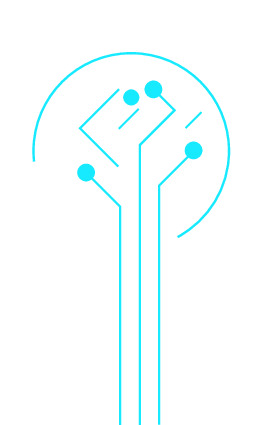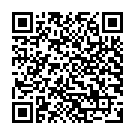|
|
|
| Module code: NE2203.CNP |
|
|
2V+2P (4 hours per week) |
|
5 |
| Semester: 2 |
| Mandatory course: yes |
Language of instruction:
English |
Assessment:
Oral exam (50%), practical exam with written composition (50%)
[updated 12.03.2020]
|
NE2203.CNP (P213-0136, P213-0137) Neural Engineering, Master, ASPO 01.04.2020
, semester 2, mandatory course
NE3202.CNP Neural Engineering, Master, SO 01.10.2025
, semester 2, mandatory course
|
60 class hours (= 45 clock hours) over a 15-week period.
The total student study time is 150 hours (equivalent to 5 ECTS credits).
There are therefore 105 hours available for class preparation and follow-up work and exam preparation.
|
Recommended prerequisites (modules):
None.
|
Recommended as prerequisite for:
|
Module coordinator:
Prof. Dr. Dr. Daniel Strauß |
Lecturer: Prof. Dr. Dr. Daniel Strauß
[updated 16.09.2018]
|
Learning outcomes:
The students will become acquainted with devices and methodologies used in clinical neurophysiology. They have a basic technological and physiological knowledge for applications in a clinical neurophysiology setting. The students know selected methods and can independently work with technical systems/components/modules, with special focus on the construction of neuroprostheses.
The students can independently plan, implement and test a battery-driven biosignal acquisition device. One focus of this project is on the communication of soft skills in planning and coordination of a defined R&D task in a small project team.
[updated 18.07.2019]
|
Module content:
Lecture:
Fundamentals of measurement engineering in neuro-electro diagnostics, Fundamentals of physiology, Fundamentals of signal acquisition and signal processing, particularly with regard to
electroencephalography, magnetencephalography, electromyography, electroneurography, reflexes, vegetative parameters, evoked potentials (visual, brainstem auditory evoked responses, somatosensory evoked potentials), motor potentials, elektrocardiography, elektroretinography, electrooculography and eye movement, sleep diagnostics, intraoperative monitoring (e.g., depth of anaesthesia, intracranial pressure), functional imaging (PET, SPECT, doppler, fMRI)
Practical training:
Design, assembly and testing of a battery-powered system for the acquisition, conditioning and analysis of myogenic biosignals (incl. approval regulations). Fundamental objective is the planing and implementation of a R&D project with selected ressources. The students learn to deal with problems in data acquisition, conditioning, data transmission and signal analysis, as well as the coverage of risk management, approval procedures as a medical product and the detailled documentation of the R&D process.
The practical lab course bridges the gap from idea to implementation and application of a medical product.
[updated 18.07.2019]
|
Teaching methods/Media:
Lecture and practical training, PPT presentations, lecture notes; Practical training: manual
[updated 12.03.2020]
|
Recommended or required reading:
Adelman, George; Smith, Bary: Encyclopedia of Neuroscience, Elsevier, 2014, ISBN 978-0444514325
Begg, Razaul; Lai, Daniel T.H.; Palaniswami, Marimuthu: Computational Intelligence in Biomedical Engineering, CRC Press, 2007, ISBN 978-0849340802
Bronzino, Joseph D.; Peterson, Donald R.: The Biomedical Engineering Handbook, CRC Press, 2015, 4th Ed., ISBN 978-1439825334
Christe, Barbara: Introduction to Biomedical Instrumentation, Cambridge Unversity Press, 2009, ISBN 978-0521515122
DiLorenzo, Daniel J.; Bronzino, Joseph D. (Eds.): Neuroengineering, CRC Press, 2007, ISBN 978-0849381744
Enderle, John; Bronzino, Joseph D.: Introduction to Biomedical Engineering, Academic Press, 2011, 3rd Ed., ISBN 978-0123749796
Hudak, R.: Biomedical Engineering - Technical Applications In Medicine, ISBN 978-9535107330
Klinke, Rainer; Pape, Hans.Christian; Kurtz, Armin; Silbernagl, Stefan: Physiologie, Thieme, 2009, ISBN 978-3137960065
Kramme, Rüdiger; Hoffmann, Klaus-Peter; Pozos, Robert S.: Springer handbook of medical technology, Springer, 2011
Ritter, Arthur B.; Reismann, Stanley; Michniak, Bozena B.: Biomedical Engineering Principles, CRC Press, 2005
Stöhr, M.; Wagner, W.; Pfadenhauer, K.; Scheglmann, K.: Neuromonitoring, Steinkopff, Darmstadt, ISBN 3-798511608
Vrbova, Gerta; Hudlicka, Olga: Application of Muscle/Nerve Stimulation in Health and Disease, Springer, 2008, ISBN 978-1402082320
Webster, John G. (Ed.): Medical Instrumentation: Application and design, Wiley, (akt. Aufl.)
[updated 18.07.2019]
|


